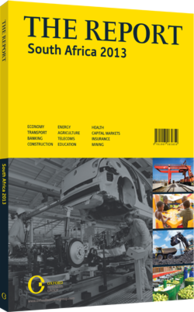OBG talks to Thulani Nzima, CEO, South African Tourism

Interview: Thulani Nzima
How much room is there for increasing visitor numbers from African markets?
THULANI NZIMA: Our traditional markets of Europe and North America, while starting to show recovery, are not growing as rapidly as emerging markets – with Asia showing double-digit growth rates and Africa contributing around 8.5% of total tourist arrivals. Some people are surprised when talking about African potential because not only is the base large, but Africans are also proportionately big spenders. Seeing this opportunity, the government has provided us with an additional R218m ($27m) to spend on regional promotion; we plan to open five new regional marketing offices over the next five years. Many African countries offer safari experiences, beaches and sunshine, which puts them in competition with us. This means local tourism providers must focus on different tourism experiences than those we emphasise in promotional campaigns for Europe or North America – emphasising lifestyle tourism, for instance. South Africa offers great nightlife, restaurants and shopping experiences for both luxury and basic needs. Many African visitors first come here for business purposes, which means South Africa must aim to convert business visitors into leisure tourists.
What are some of the constraints you face when increasing African visitor figures?
NZIMA: The two main challenges are visa restrictions and limited direct air access. The government is working with its African counterparts to simplify visa requirements and open new flight routes through an open skies policy. Unfortunately, the continent has struggled so far to implement an open skies agreement. Part of the challenge is that many African nations lack reliable, efficient and competitive national carriers. They are often protectionist and fearful that open skies will not contribute to the success of their national carrier.
Visas and bilateral aviation agreements are areas out of our direct jurisdiction, but we try to play our part by engaging with all market players that can remove impediments toward the promotion of tourism. We need to make sure that everyone is aligned with the main objective of providing value for money and that no one tries to rip tourists. Tourism is collaborative; one participant in the value chain – whether a hotel, car rental agency, or individual tour guide – can mess it up for everybody.
How crucial is the meetings, incentives, conferences and exhibitions segment to tourism revenue for the country?
NZIMA: Global figures reveal that on average around 40% of delegates will stay on in the country after the event or take a pre-conference tour, while around 40% will be accompanied by a spouse or partner. Average spend by event delegates is also higher; typically, someone else pays for them, so they have more disposable income. For example, a Chinese tourist’s average per-visit spend here is around R18,000 ($2194) – double the R9000 ($1097) average – and this is likely largely due to the fact that 48% of the traffic we received from China last year was for business purposes.
To what extent can you encourage growth in developed source markets?
NZIMA: Arrivals in 2012 grew 10.2%, more than twice the global trend of 4%. While we attribute this performance to a number of factors, one reason is our perception as a value for money destination at a time when the global economy is still in a recovery phase. It is important to distinguish that being a good value for money proposition does not equate to being cheap.
While many tourism-dependent countries have been dropping their prices to attract visitors, we have maintained our pricing structure, which focuses on ensuring that we offer tourist experiences suitable for every budgetary requirement. A visitor to the Kruger National Park can opt for basic camping, a safari experience or a luxury stay at a private lodge. What matters is that the experiences match their expectations and that visitors feel they received good value for what they paid.
You have reached the limit of premium articles you can view for free.
Choose from the options below to purchase print or digital editions of our Reports. You can also purchase a website subscription giving you unlimited access to all of our Reports online for 12 months.
If you have already purchased this Report or have a website subscription, please login to continue.

